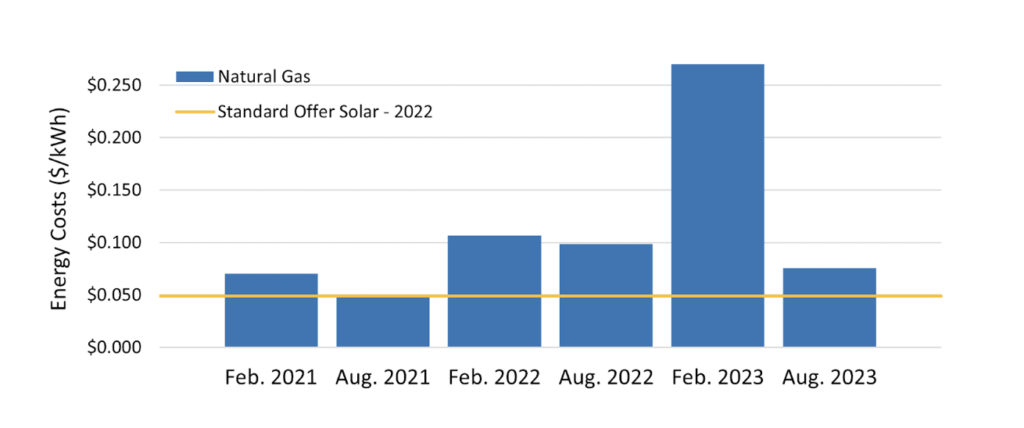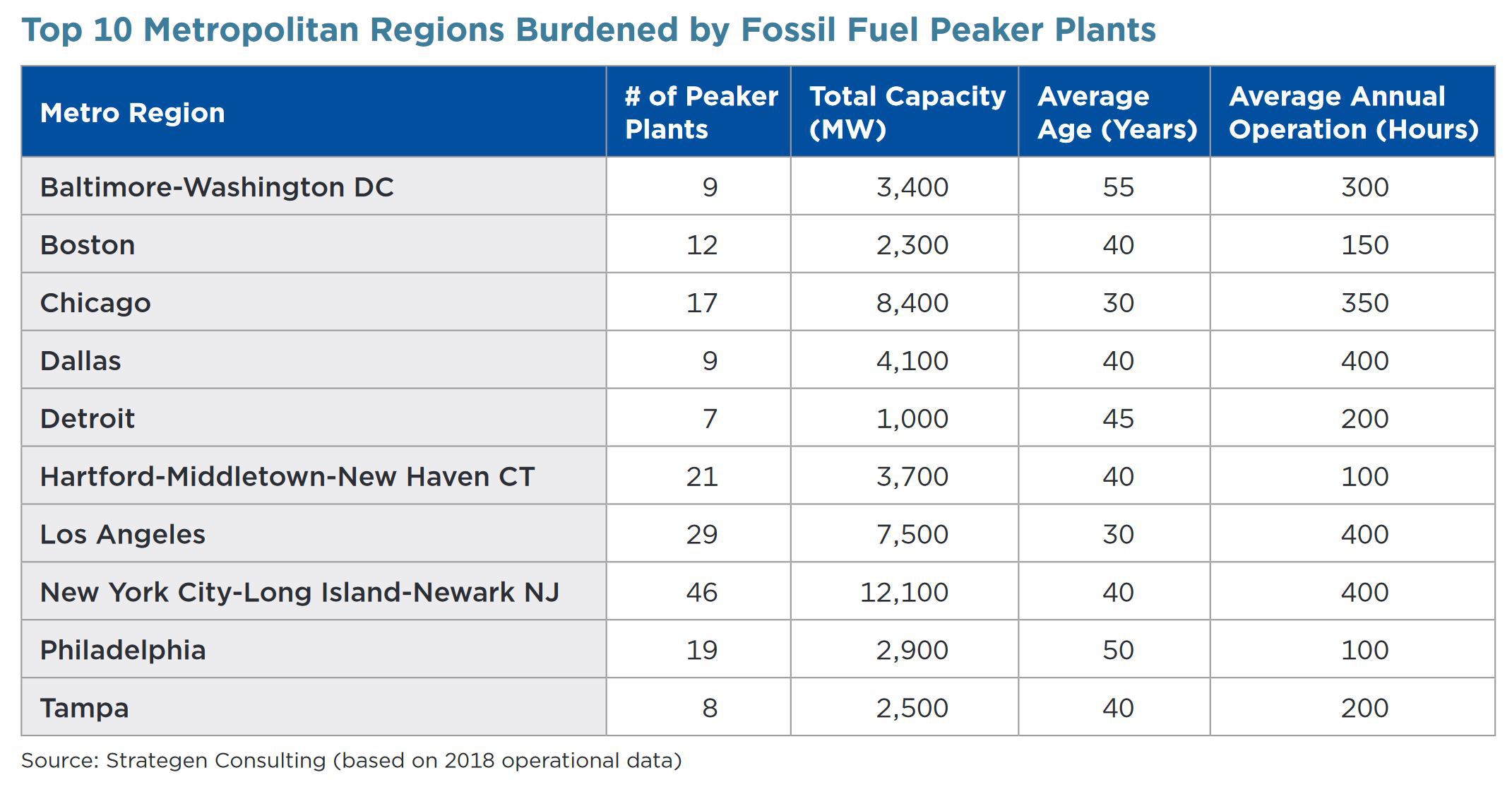But I Keep Hearing Vermont Has Really “Green” Electricity?
We do not. Most of the physical energy delivered to Vermont in the winter, at night, and at peak periods is natural gas and nuclear power.
But Isn’t it Expensive to Use Renewable Energy?
As natural gas prices continue to rise, building new renewables like solar power continues to be the sensible and more affordable alternative. The chart below compares the price of natural gas versus the price of solar power purchased by Vermont utilities from the Standard Offer Program.

Won’t it Take a Lot of Vermont Land to “Go Solar”?
No. One model created by REV using the DPS electricity load growth forecast shows that to double Vermont’s in-state renewable energy purchasing requirement to achieve 20% by 2030 requires about 2,300 acres of new solar beyond the estimated acreage to comply with existing law.
REV finds that meeting the RES’ existing in-state renewable energy requirement of 8.8% for 2030 will require approximately 700 acres. Increasing this requirement to 20% would require about 2,300 additional acres for solar. As context, Vermont is losing on the order of 1,500 acres of forest a year mostly because of “suburban and rural residential sprawl” per a 2017 UVM study.
Why We Need More In-State Renewable Energy
Jobs
When Vermont’s renewable energy deployment peaked in 2016 6,965 Vermonters were working in the renewables field around the state. As you can see from the chart below, since the moratorium on new wind projects took effect and the compensation for net metering began decreasing jobs in the renewable energy field have decreased 21%

The renewable sector also employs people from a wide range of educational backgrounds — laborers, electricians, engineers, etc. and these jobs are geographically dispersed throughout Vermont. The renewable sector is unique in that it supports broad-based growth for both the blue-collar and white-collar workforce across the state.
Tax revenue
The average Standard Offer sized solar project (up to 2.2MW) generates
$15,000-$20,000/yr in tax revenue for the state of Vermont
$1,400-$1,600 per acre per year for a landowner leasing their land to a solar developer
Approximately $20,000 in permit fees for the Agency of Natural Resources and Department of Public Service
Environmental Justice
In 2020, Vermont ranked 49th in the country for the percentage of the share of its electricity generated in state. Two of the six metropolitan areas in the nation most burdened by oil/natural gas peaker plants are in ISO-NE: Boston and Harford/New Haven. When Vermonters don’t rely on in state renewables, we are asking people throughout New England to bear the environmental consequences of our need for electricity.

Energy Independence & Energy Security
When Vermont deploys more renewables, we further insulate ourselves from the price shocks that other states experience from the volatile fossil fuel market. For example, rising fossil fuel prices have caused rates to go up 8% nationally and some ratepayers in New Hampshire to see their bills go up $70/mo.
Other Northeastern states are also setting aggressive renewable standards and electrification goals. There will be intense competition for new renewable energy and Vermont cannot afford to be left empty-handed. Many Vermont utilities are anticipating using off-shore wind to meet GWSA goals but the projects are fraught with development risk and projects that are completed will have closer potential off-takers in New York and southern New England. Vermont can take greater control of its own energy security by building renewables in-state.
Efficiency
Generating electricity close to where it will be used prevents energy from dissipating as it travels across power lines and reduces the amount of electricity we need to generate. In 2021, the physical energy procured by Vermont utilities totaled 5.8 million MWh but the energy used by Vermont ratepayers was almost 8% lower. This means that approximately 460,000 MWh of electricity was wasted last year, as it was carried over the transmission and distribution system- equal to the annual electricity use of about 56,000 Vermont homes.
Fighting Climate Change Across New England
Because of the interconnected nature of the ISO-NE grid, every new kWh of solar power that a Vermonter deploys replaces electricity generated by natural gas somewhere in New England.
